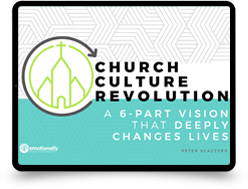When I became a Christian my sophomore year in college, I was birthed into a community (IVCF) that linked the gospel and the bridging of racial, economic and cultural barriers. It was not a specific “calling” for some but a biblical mandate that filled us with visiona and hope. I see the Holy Spirit moving in a similar way today as large numbers of young people are passionate to build multicultural churches that demonstrate the power of the gospel. When Geri and I planted New Life Fellowship Church 22 years ago, we chose Elmhurst/Corona, Queens, as a strategic location for the church due to the fact that individuals from more than 120 nations live in the area. In addition, the neighborhood consisted then, as it does now, of poor, working, and middle-class New Yorkers. So while we recognized the benefits of such a location and desired to bridge the racial, cultural, and economic barriers for the sake of Christ, we underestimated the suffering this commitment would require for all us of in leadership. I soon realized that our evangelical discipleship/spiritual formation model was too superficial to bring about the kind of in-depth transformation we would need to live in authentic community. There were tensions between Whites and African Americans, Columbians and Puerto Ricans, Arabs and Jews, Filipinos and Chinese, as well as Haitians and Dominicans, just to name a few. In fact, I remember one young Chinese- American woman who painfully left our church after being overwhelmed by conflicts and the direct approach of people from other cultures interacting in her small group. Barriers of economic class and educational status also loomed large in our midst. For instance, educated African Americans struggled with other African Americans who embraced a “hood” mentality; and Asians, with their rich legacy of love for education, had great difficulty in embracing high-school dropouts who now attended our youth group. In addition, middle-class Latinos struggled to empathize with Latinos who remained stuck in a cycle of poverty and dependence. Whites also struggled to embrace being minorities, many of them experiencing this for the first time. We also underestimated the worldwide scope of racism based solely on the color of skin. For example, I learned that the darker one’s skin in Latin America, the generally lower he or she remained in social standing. In fact, part of the reason our Spanish congregation split in the early years was due to tensions between lighter-skinned and darker-skinned Latinos. We also had to consistently remind immigrants that they were now part of the American church. Biblically, they could not ignore the history of slavery and racism in the United States. Key early decisions, then, enabled our church to grow into a congregation where individuals from more than sixty-five nations are involved today. We mentored peoples from a variety of cultures, focused on our common mission and remained committed to the passionate worship of Jesus. And over time, we slowly built an elder board, pastoral staff, and worship team that reflected our diversity. At the same time we remained faithful to our commitment to quality. We made mistakes in the procesess but I am grateful for each of God’s lessons and His gentle leadership for us at NLF over the years. Yet in our case, significant breakthrough came only when we began integrating emotional health and contemplative spirituality into our discipleship model fourteen years ago. A spiritual formation paradigm that included emotional health began, for us, with a commitment to break the power of our past. Like Abraham, we responded to the invitation to leave our families, cultures, races, and countries behind to become part of the new family of Jesus (Mark 3:31ff.). We also learned to lament our losses—like David, Job, and Jeremiah. We realized that Whites, for example, needed to grieve their own losses if they were going to empathize with the losses of immigrants and minorities. And we began to value the character of loving well and brokenness as true measures of maturity, instead of knowledge, gifts, or anointing. We then called our people to leave the contemporary, consumer church model so prevalent in the West for a more radical spirituality modeled after the Desert Fathers from North Africa. We moved our membership to a “Rule of Life,” invited people to contemplative practices such as Daily Offices and Sabbath-keeping, and began a strong emphasis on silence and solitude. In so doing, we intentionally left what I typically call “American Christianity” for a radical pursuit of the person of Jesus. In other words, we united around a passion for Him. God has opened up a unique door for us at New Life to demonstrate the power of the gospel. And I, for one, could not imagine doing anything else! The following are a few practical steps for us at New Life to consider: 1. Pray. The miracle of reconciliation that breaks down demonic barriers of division is ultimately the work of God. This has always and continues to remain the foundation of all our genuine progress at New Life. 2. Worship and Music.Learn about different worship styles (e.g. gospel vs. contemporary Christian music). Music is closely tied to culture and history. Listen and worship through CD’s from ethnicities different than your own. 3. Small Groups and Friendships. Consider joining a small group with people from a different race, culture or ethnicity. Develop intentional friendships with people from different social classes and cultures than your own. 4. Consider Relocating. Incarnate. Living in a different neighborhood, far from your cultural/racial/ethnic roots is an experience and learning you cannot gain through a book or seminar. 5. Work. Some of you may have the option to make changes within your work, or even consider another type or work, that would expose you to an entirely different world of people than those with whom you currently work. 6. Books, Movies, Plays. Read books like Malcolm X and Joy Luck Club. Watch movies like Rosewood and White Man’s Burden. Attend plays like Memphis on Broadway. 7. Restaurants and Food. Intentionally eat at restaurants in different neighborhoods than you usually do. Queens is a great place for this! 8. Deepen your Contemplative Life and Learnings around Emotional Health. There is no doubt in my mind that this is key to our long term future at New Life. Our goal is loving Jesus out of which we love ourselves and others. Emotionally Healthy Spirituality remains the primary means by which we encourage people to bridge barriers in a healthy, meaningful way. Reconciliation is an outgrowth of this. These are my first steps. What might you add or expand on this? Let’s keep the conversation going!
28
Feb
Bridging Barriers: Next Steps for New Life Fellowship Church
Posted on February 28th, 2010







